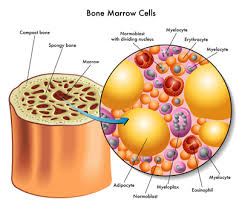When I was undergoing Multiple Myeloma treatment, I found myself looking for a miracle cure. Instead, I found a trove of evidence-based therapies that I use to this day to stay in remission, 25 years after my diagnosis.
Hi David- I just slipped over from MGUS (monoclonal gammopathy of undetermined significance) to phase 1 multiple myeloma. Can I hope to reverse or stay the same following the Multiple Myeloma Cancer Coaching Program?
I haven’t started chemo yet because of covid. I thought it would cause problems with my immune systems ability to fight it off. Was this a mistake? Ginny
Hi Ginny-
Your questions raise several important issues. I am covering a lot of territory below. Please ask any and all questions.
Are you experiencing any symptoms? Bone pain? Kidney damage? Nerve damage (tingling in feet?).
Several things for you to consider.
First and foremost, postponing your induction chemotherapy may be a real positive for your MM journey. Please consider
“prehabilitating” from now until you begin your induction chemo regimen. I will make a brief list of basic prehabilitation therapies for multiple myeloma below-
- Frequent, moderate exercise (walk, swim, yoga, etc.)
- Eat cleanly, nutritiously (no tobacco, moderate alcohol, little refined sugar, little animal fat, lots of fruits and veggies)
- Daily supplementation with multi-faceted nutritional supplements- see the links below-
- Get plenty of sleep, try to relax- some swear by yoga…
If you can prehabilitate for a few weeks before you begin induction chemotherapy research shows that you will respond better, experience fewer side effects, recover from chemo faster.
Secondly, you were correct to postpone chemo during covid-19. Not only because of prehabilitation but because a common side effect of chemo is
myelosuppression- red, white blood cells, platelets depleting.
Myelosuppression makes you more susceptible to infection. Think old people dying of the flu, covid. The old person’s immune system is weak.
Thirdly, yes, the MM CC program is designed to accomplish several things-
- reduce or maintain MM levels-
- deepen and prolong remission-
- reduce treatment-related side effects-
The MM CC program contains dozens of evidence-based therapies shown to reduce or fight multiple myeloma. I cannot guarantee results of course. I think it is possible that you don’t need to begin chemotherapy at all or you can begin at a much lower dose of chemo.
While conventional MM oncology has gotten good at stabilizing newly diagnosed MM patients, I believe the
“standard-of-care” induction regimen such as RVD are much too much toxicity for patients.
The MM CC Program is not against or anti-conventional MM management. My experience and research has taught me that long-term MM management is about combining conventional with evidence-based non-conventional therapies as well as with complementary therapies such as exercise, nutrition, supplementation, etc.
Always remember that the main challenge for all MM patients is MDR aka
multi-drug resistance. MM always becomes resistant to conventional chemotherapy regimens. Always. The less chemo the patient undergoes, the slower he/she will move toward MDR.
Well, Ginny, I hope that I didn’t overwhelm you with information. Please feel free to ask any and all questions you may have.
Thanks,
David Emerson
- MM Survivor
- MM Cancer Coach
- Director PeopleBeatingCancer
“When I first read about curcumin, I learned about an evidence-based multiple myeloma therapy that was also non-toxic. I was ecstatic. Numerous studies, in vitro, in vivo, in humans, have shown that curcumin, a non-toxic therapy, not only kills MM but also synergizes to enhance the MM killing ability of both velcade and revlimid….”
“Multiple myeloma, the blood cancer itself, causes bone, kidney, blood and heart damage. Multiple myeloma therapies cause bone, kidney, blood and heart damage. Most of the time it is impossible for myeloma patients and survivors to tell the difference between damage done by MM symptoms or damage done from MM side effects. Fortunately, omega-3 fatty acids protect against bone, kidney, blood and heart damage whether the damage is caused by the MM itself or the chemotherapy designed to treat your MM…”
“…That’s correct. Your chemotherapy will probably make you feel even more tired. Your dexamethasone (the D in RVD) may weaken your bones.
The most common multiple myeloma symptoms are also the most common multiple myeloma side effects which are also the most common MM causes of death.
I don’t believe that all that commonality between MM symptoms, MM side effects and MM COD is a coincidence. I think conventional oncology has MM treatment backwards.
Vitamin D3 is an excellent example of an evidence-based therapy that is easy to administer, has few if any side effects and is downright cheap.
According to the research linked and excerpted below:
- Low blood levels of vitamin D3 increases your risk of a MM diagnosis-
- Low blood levels of vitamin D3 reduce a MM patient’s overall survival, on average-
- Low blood levels of vitamin D3 are associated with ASCT complications-
- Low blood levels of vitamin D3 are associated with kidney disease-
- Low blood levels of vitamin D3 can weaken your bones-
- Low blood levels of vitamin D3 can lead to heart failure-
- Low blood levels of vitamin D3 increased your risk of infection-“
“Cancer prehabilitation has been defined by Sliver and Baima (2013) as “a process on the cancer continuum of care that occurs between the time of cancer diagnosis and the beginning of acute treatment.”
The evidence supports the notion that prehabilitation programs can improve physical and psychological health outcomes and decrease overall health care costs. The care model for cancer prehabilitation should include timely and efficient assessment throughout the care continuum with a focus on improving outcomes in cancer at every stage.
During the cancer journey, three types of assessment with different aims are included:
(1) prehabilitation assessment pretreatment,
(2) rehabilitation assessment at early post treatment, and
(3) health promotion assessment at the end of treatment.
Specific prehabilitation assessment and interventions for treatment-related complications or major side-effects should be considered…”



